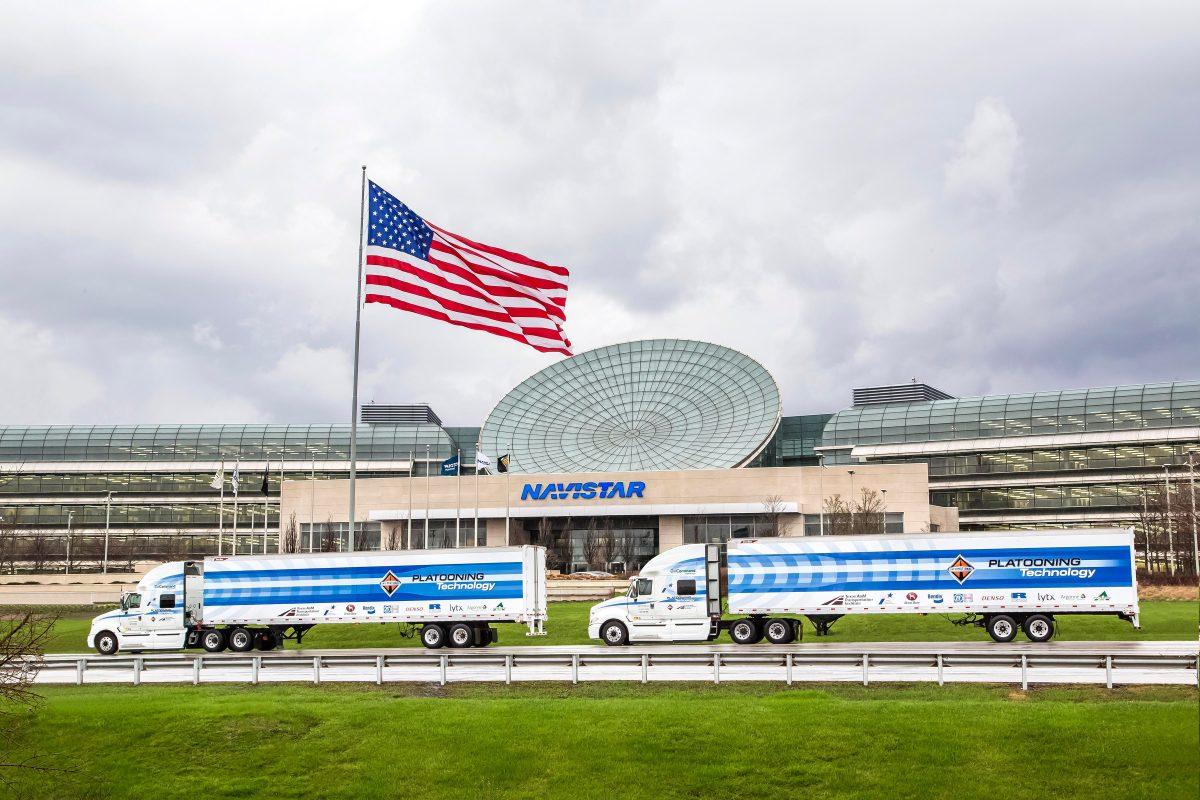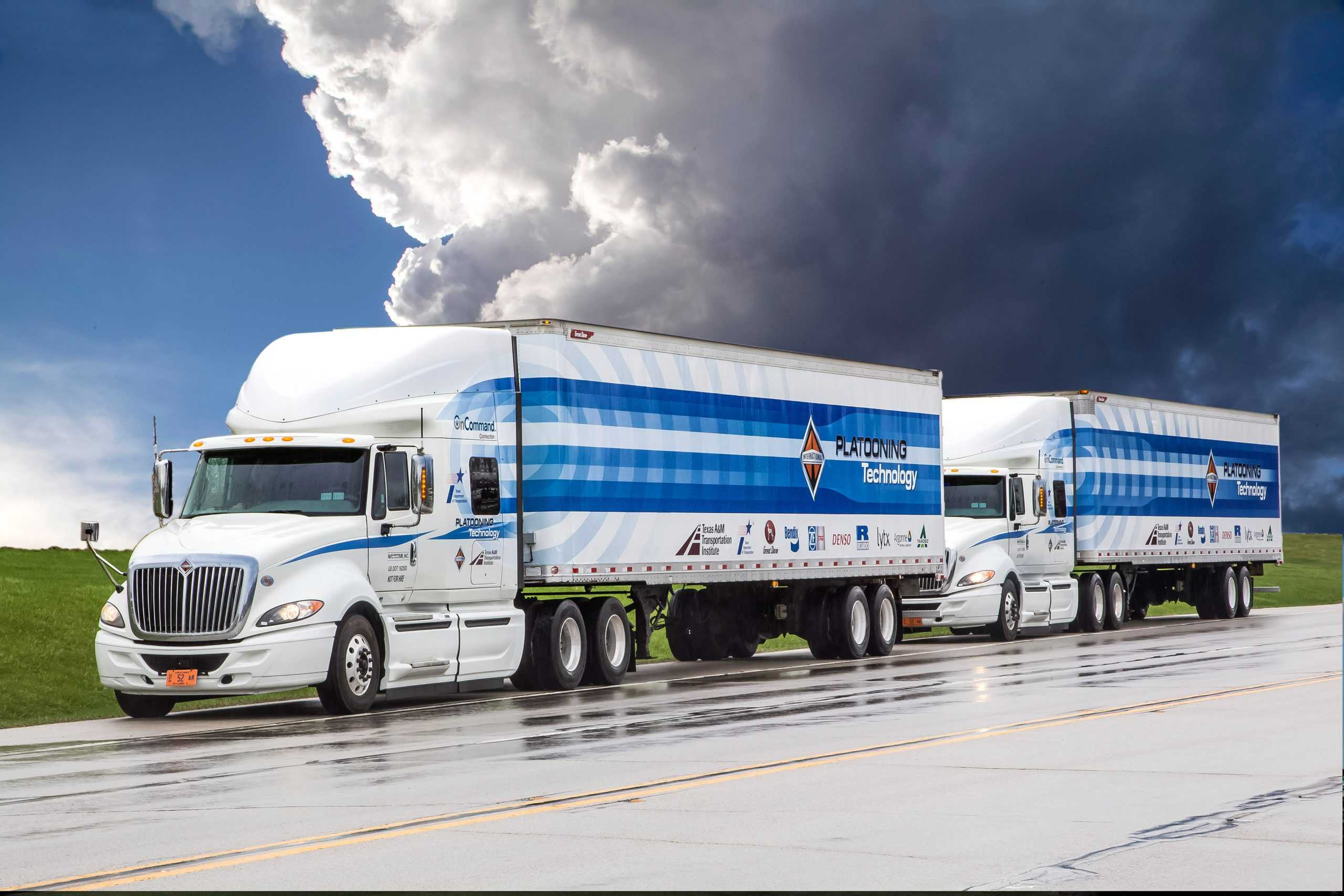The Texas A&M Transport Institute (TTI) is researching ways to make highways safer by using self-driving 18 wheelers to help combat human error and reduce fuel consumption. The process has been termed “platooning” and involves one or more trucks automatically following a lead truck at a safe distance and speed.
The project, led by Michael Lukuc, the project manager for connected and automated transportation technologies, a Research Scientist at TTI and the current principal investigator for the project, has brought together a team of students from the civil engineering department and six mechanical engineering Ph.D. students, while also involving students from the Bush School of Government and Public Service.
While the research currently is on implementing a two-truck system where the second truck is almost completely automated to follow the lead truck at a calculated safe distance, Lukuc said he is confident of extrapolating the idea to a system with more trucks.
The project can have also have multiple levels of automation — levels four and five are fully automated systems with no drivers, according to Lukuc.
“Level one systems are not commercialized yet, probably will be commercialized this year, and our system works with level two automation as determined by the society of automotive engineers,” Lukuc said. “Level two is a bigger step from a safety engineering standpoint and should take four-five years after level one is made available.”
Lukuc said the two trucks communicate through radars, a high accuracy GPS that is above commercial grade and they also use cameras facing ahead on both trucks.
“The system can automatically handle merges onto other free ways, lane changes and turns, as long as the distance between the trucks is less than a 100 metres and the speed is under 55 miles an hour,” Lukuc said. “The driver of the second truck could pretty much let go of the steering wheel and the foot pedals and just sort of monitor the environment standing by, although our systems are capable of full stops following the same from the lead truck.”
The project began as a co-op agreement with the Texas Department of Transport in 2014, with funding from the state, according to Lukuc.
According to the research paper put out by Lukuc, Jason Wagner and Maarit Moran, associate research scientists at TTI, many of the issues at the beginning of the process were legal and regulatory issues around the topic of self-driving trucks.
“Platooning enables commercial trucks to travel closely together while at high speeds without the worry of collisions, which can provide environmental benefits and reduce fuel and operational costs,” Wagner wrote. “Vehicle communications and carefully controlled automation technologies enable the system, and while the technologies are mostly mature, legal, administrative and regulatory issues may yet prove barriers to deployment.”
Lukuc said universities such as A&M, the University of Texas and other organizations, including the Centre for Transportation Research and TTI, compete for these funds to aid them in their research.
“Any gas purchased in the state of Texas comes back to the state of Texas for road improvements and research,” Lukuc said. “Some of that money is given to the Texas Department of Transportation to research topic areas or for specific projects that come out in the form of a research proposal from universities like ours or the University of Texas and its transport organizations among others.”
Lukuc said the research is executed in separate stages, each one taking the time to ensure the quality of the work done. According to Lukuc, the research will be done in roughly a year.
“The project’s proposal included a three phase plan — taking the idea and creating a proof of concept, engineering the implementation and finally, the actual implementation and evaluation,” Lukuc said. “We are currently in the middle of phase two of the project which is scheduled to end around April or May 2019, with the project going into commercial testing after phase three.”
The project also aims to reduce fuel consumption, according to Lukuc.
“The second truck has shown a reduction in fuel consumption by about 8-10 percent while the first has shown 4-5% less fuel consumption through platooning,” Lukuc said. “The best savings have been observed to be when the trucks are mostly on a straight road with gradual curves and the distance between the trucks are under 50 metres.”
With savings in fuel comes lesser emissions,which Lukuc said has a positive effect on the environment it also reduces the workload for the driver.
“It is clear that emissions are reduced with lesser fuel consumption,” Lukuc said. “And another advantage is that the drivers are under lesser stress, assuming they trust the system.”
Lukuc said there might even be a separate lane for automated vehicles during the period of transition.
“Levels four and five technically need no drivers and the possibilities are endless,” Lukuc said. “You could call the vehicle to come to you from where it is parked or even put in a destination and have it drive your kids to school.”
Self-driving 18-wheelers aim to make roads safer
February 20, 2018
Donate to The Battalion
Your donation will support the student journalists of Texas A&M University - College Station. Your contribution will allow us to purchase equipment and cover our annual website hosting costs.
























